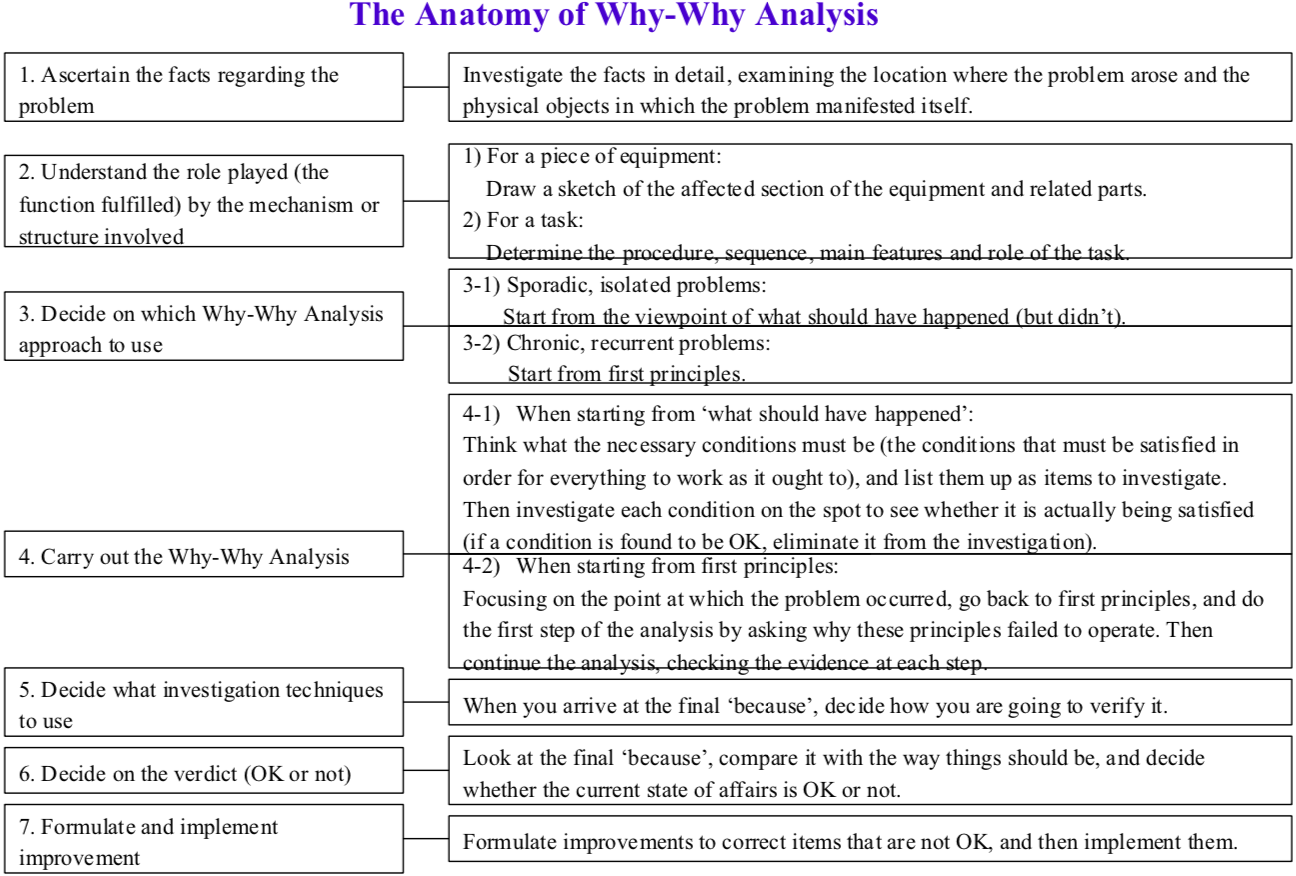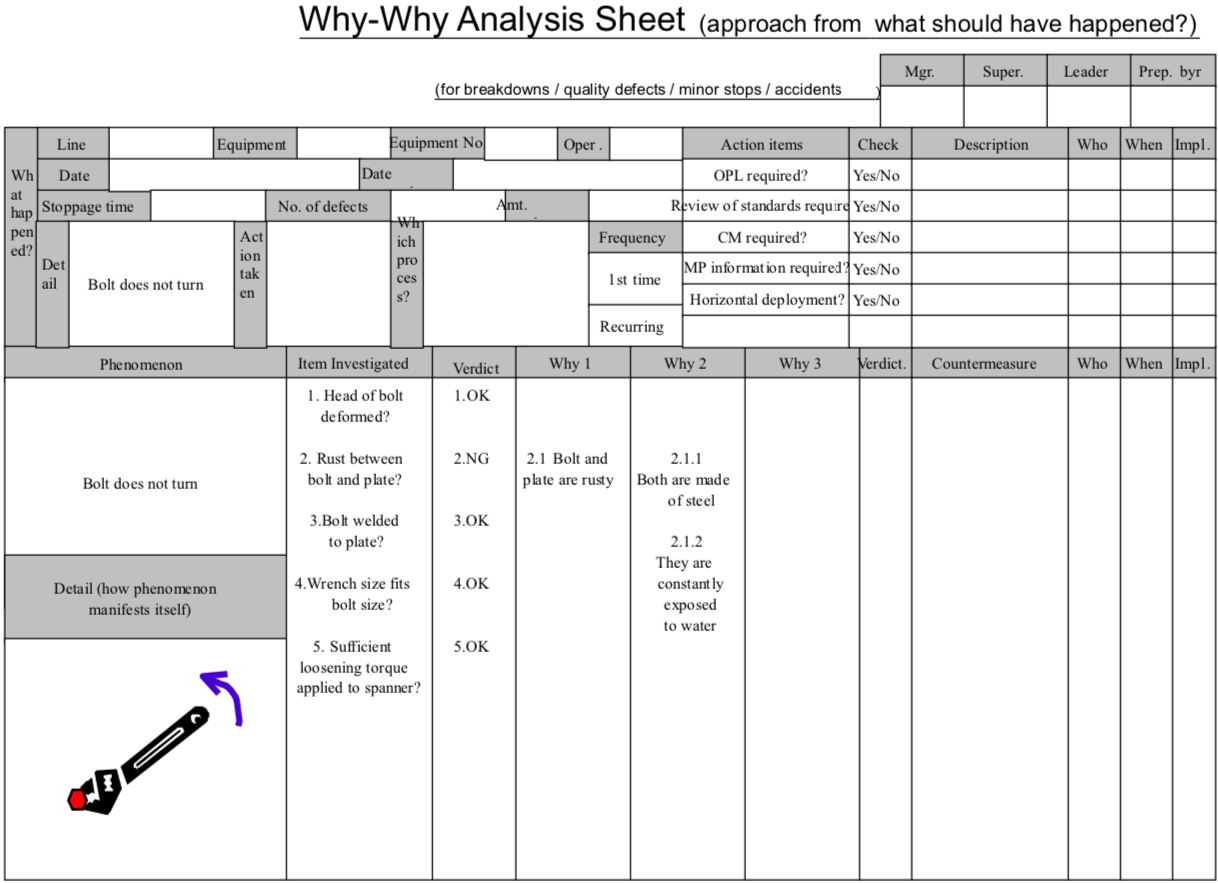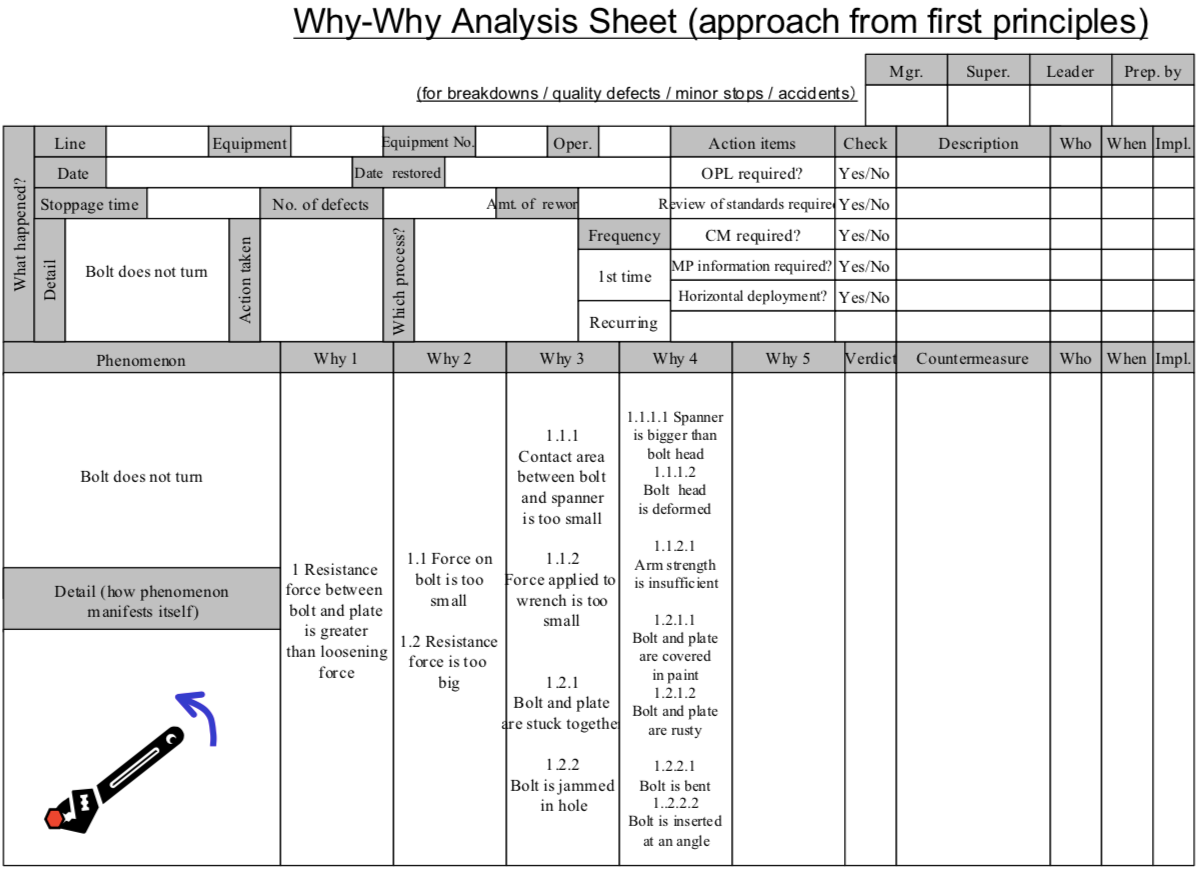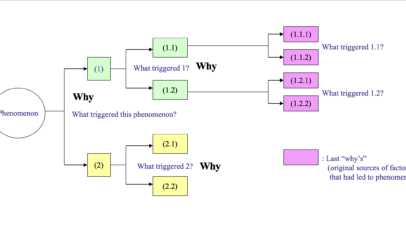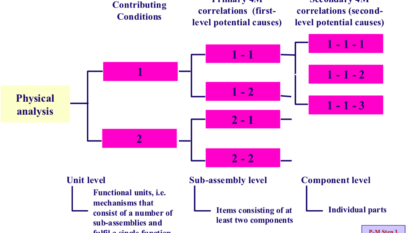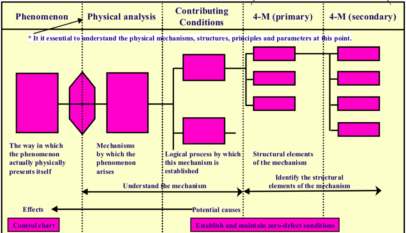Why-Why Analysis is a technique for systematically tracking down undesirable phenomena’ root causes logically and methodically, based on the facts, instead of merely brainstorming. One of the following two basic approaches selected during Why-Why Analysis:
- Approach starting from the viewpoint of “what should have happened (but didn’t)”. Think what the necessary conditions must be (the conditions that must be satisfied in order for everything to work as it ought to) and list them up as items to investigate. Then investigate each condition on the spot to see whether it is actually being satisfied.
- Approach starting from first principles. Focusing on the point at which the problem occurred, go back to first principles, and do the first step of the analysis by asking why these principles failed to operate.
Eight essential considerations when implementing Why-Why Analysis
- Identify the phenomenon by closely observing the physical objects and materials involved in situ
- Use simple phrases like “A became B” when defining the phenomenon and answering the “Whys
- Check the logical structure of the analysis by reading back from the last Why? to the phenomenon.
- Reading the analysis backward, check that all the possible causes have been identified for each event.
- Continue asking Why? until you identify the actions that will prevent the problem from recurring.
- Only note items that deviate from standard.
- Avoid trying to identify causes lying in human psychology.
- Do not use negative words such as “bad.”
